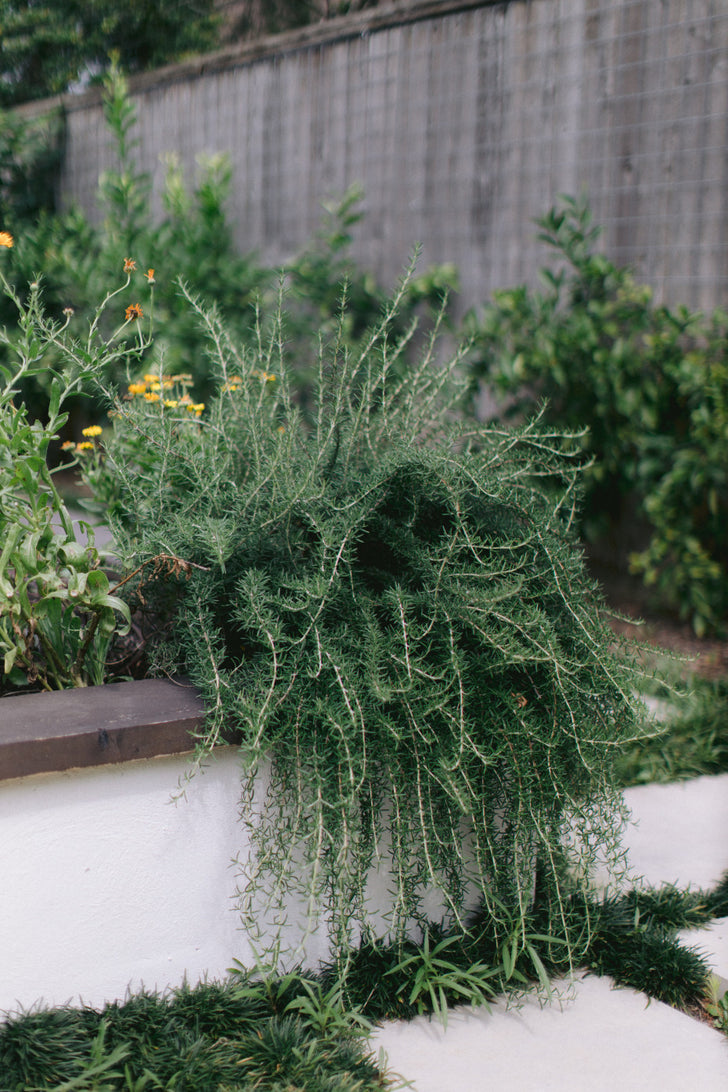How to Propagate Rosemary

When it comes to plant magic, propagation is where it's at. It's like taking a piece of a plant, giving it some love, and poof! You've got yourself a brand new plant. And the best part? You can keep multiplying them like crazy. My love for rosemary goes way back. Its scent has always been a comfort to me, and I've learned it can actually help with anxiety and mood. So, it's no surprise that when I started my outdoor gardening rosemary was the first thing I planted. And it's been a staple in all my gardens ever since.

The Step by Step to Propagating Rosemary
When it comes to propagating rosemary, you can either keep your cuttings in some fresh water until they develop roots or plant them directly in some sand. Rooting a cutting in water typically produces roots faster, while planting cuttings in sand often results in stronger plants when they're transferred to soil. You choose the method that best works for you.
Gather Your Rosemary Cuttings
To harvest your own cuttings, it's important to know that there are two types of wood on rosemary plants: soft and hard.
The tips of each branch are soft, meaning you could bend each tip without it breaking. The hard wood is older and down at the bottom of the branch, and if you tried to bend those stems, they'd snap.
For propagation, you'll need a soft cutting about 4 to 6 inches long. If you're harvesting from a plant, look for the place where the stem transitions from soft to hard wood.
Prepare Your Rosemary Cuttings
Take your clean pair of pruners or sharp scissors and cut the bottom of the stem at a 45 degree angle. This opens up the capillaries so that the plant can better absorb water and grow new roots.
Strip the leaves from the bottom third of the pruned stems all the way down to the end of the trimming so that there are a couple of inches of bare rosemary stem. Take the leaves you’ve stripped and either dry them or use them right away in your kitchen.

Put Your Rosemary Cuttings in a Pot Filled with Soil/Sand Mixture
If you're planting your cuttings straight away, make sure that your pot has good drainage holes. I like to use terra cotta pots. Fill the pot with coarse sand like paver sand (not play sand), which is available at any hardware store. Sand is a great medium for rooting herbs because it holds moisture.
While you don't need to use rooting hormone for herbs, it's a great idea to dip the angled tips of your cuttings in some cinnamon to prevent the stem from rotting as it's trying to form roots.
Moisten your sand and make a little hole in the middle with the end of a pencil or a dibber, if you have one.
Place the cutting into the hole, being careful not to bend the tip. All of the leaves should be above the sand. Support the cutting with sand to keep it upright as it starts to produce roots. You can plant several cuttings in the same container.
Tend Your Rosemary Cuttings
If your cuttings are in water, pour out the old water and fill with fresh water every couple of days. Keep your container in a semi-shaded place.
If your cuttings are potted up, make sure the sand stays moist but not soaking wet. Put your cuttings in a spot where they'll receive bright but indirect light.
The water method should start to produce roots within a couple of weeks. Transfer your cuttings to a small pot filled with soil and compost once roots have formed. Again, use a pencil or dibber to make a big enough hole that the roots of the cutting aren't disturbed when planting.
Though it does take longer, a potted cutting should form really healthy roots within four to six weeks. Once you see new growth, you can transfer your plants to their own individual pots filled with soil or your kitchen garden.
Make sure you let the soil of your rosemary plant dry out before you come back and water again. Rosemary doesn't like to be overwatered.

